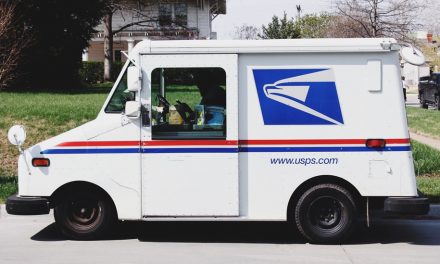
US postage rates going up again
Yesterday the Postal Service announced that it would raise rates by 5.4% on January 8th, 2006. The cost to mail a letter will increase by 2 cents to 39 cents.
In their announcement, postal officials blamed Congress and the 2003 CSRS pension law for the rate hike, stating, "This rate increase — the first since 2002 — is needed to fulfill the requirement of a federal law passed in 2003. That law requires the Postal Service to establish a $3.1 billion escrow account, with use of the funds to be determined by Congress at a later date. Without this federal mandate, it would not have been necessary to raise rates in 2006."
The 2003 law reduced the CSRS pension contribution the Postal Service was required to pay into the CSRS plan by roughly $3.1 billion a year. It allowed the Postal Service to pocket the first three years of savings in order to pay down debt and keep postage rates frozen until 2006. The law then required that the Postal Service escrow the CSRS savings starting in 2006, presumably to underwrite some of the agency's other $60-$90 billion of unfunded obligations, like it's retiree health care plan.
The Postal Service wants Congress to abolish the escrow requirement and release the $3.1 billion savings so it can use the money any way it sees fit, as opposed to being required to use it to fund the agency's remaining unfunded employee benefit obligations.
Congress got it right and should require that all the CSRS savings be used to pay down the Agency's other unfunded obligations. Both the CSRS pension program and the underfunded postal retiree health care plan are federal government programs underwritten by the taxpayers. If the Postal Service defaults on its obligations to any of these programs, the taxpayers will be left holding the bag. Therefore, it makes perfect sense and good public policy to utilize the savings from the overfunded program to properly fund the underfunded program(s).
UNCONTROLLED SPENDING CAUSES INCREASE …
Postal officials continually claim that they have increased productivity and cut expenses by some $5 billion over the passed few years. Nothing could be further from the truth.
The agency uses its own homegrown Total Factor Productivity (TFP) formula to claim steady improvement in productivity since 2001. However, the more generally accepted measurement of productivity shows far different results. For example, this more common method, which divides revenues by compensation expenses, shows productivity has actually decreased by 2.3% since August of 2004.
As for cost cutting, the Postal Service reported total expenses increased by nearly $2.4 billion for the first 11-months of fiscal 2005 over the same period in 2004. It is important to note that this $2.4 billion increase is in addition to the $3.1 billion CSRS windfall USPS received for fiscal year 2005.
Most disturbing is the rapid and uncontrolled explosion in employee compensation expenses. For example, non-pension compensation expenses increased by nearly $3.1 billion (7%) between 2000 and 2004 while the number of career employees decreased by eighty thousand (10.2%). In 2000 the average non-pension cost per employee was just over $54,000. By 2004, the number skyrocketed by 19.4% to just over $64,500 … hardly what would be considered aggressive cost cutting.
Print friendly version available at http://www.postalwatch.org/news2005/051116pw_rate_hike_brief.pdf
PostalWatch is a non-partisan, non-profit advocacy organization committed to a fair, efficient and accountable U.S. Postal Service.
SOURCE PostalWatch












